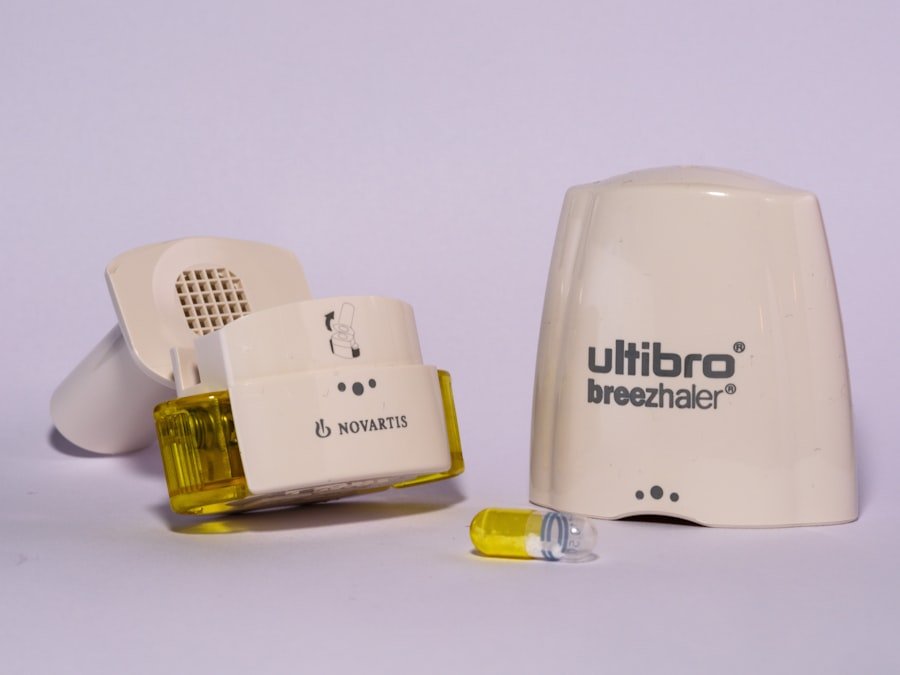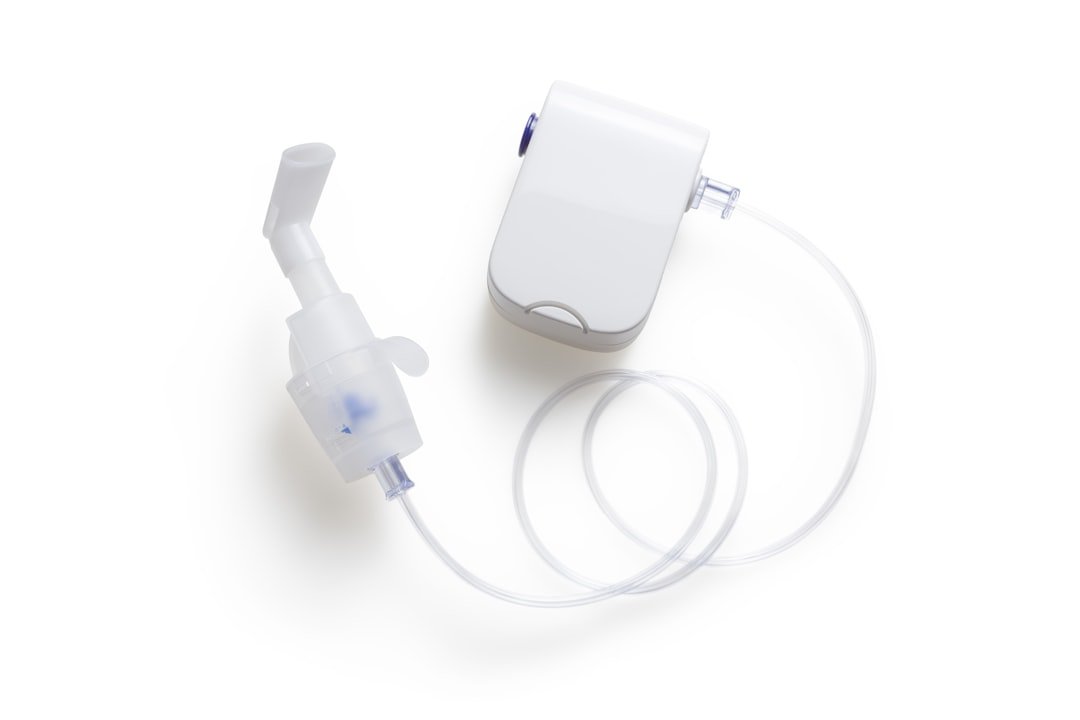This post may contain affiliate links. When you purchase through links on our site, we may earn an affiliate commission.
As I delve into the world of allergies and asthma, I find it essential to grasp the fundamental concepts that define these conditions. Allergies occur when my immune system reacts to a foreign substance, known as an allergen, as if it were a threat. Common allergens include pollen, dust mites, pet dander, and certain foods.
When I encounter these substances, my body may produce histamines, leading to symptoms such as sneezing, itching, and swelling. On the other hand, asthma is a chronic respiratory condition characterized by inflammation and narrowing of the airways, making it difficult for me to breathe. The interplay between allergies and asthma is significant; many individuals with asthma also have allergies, and exposure to allergens can trigger asthma attacks.
Understanding the mechanisms behind these conditions helps me appreciate their complexity. Allergies can manifest in various forms, from mild reactions to severe anaphylaxis. Asthma symptoms can range from occasional wheezing to persistent coughing and shortness of breath.
The relationship between the two is particularly evident during allergy season when pollen counts rise, and I may find myself grappling with both allergic reactions and asthma flare-ups. This duality emphasizes the importance of recognizing how allergies can exacerbate asthma symptoms, prompting me to take proactive measures in managing both conditions.
Key Takeaways
- Allergies and asthma are common conditions that can be managed with the right treatment plan and lifestyle changes.
- Identifying triggers and symptoms is crucial in managing allergies and asthma effectively.
- A personalized treatment plan that includes medications and inhalers can help control symptoms and prevent attacks.
- Lifestyle changes such as reducing exposure to allergens and maintaining a healthy environment can greatly improve allergy and asthma management.
- Seeking professional help and support, especially for children, is important in managing allergies and asthma effectively and preventing attacks.
Identifying Triggers and Symptoms
Identifying triggers is a crucial step in managing my allergies and asthma effectively. I have learned that triggers can vary widely from person to person, making it essential for me to pay close attention to my environment and experiences. Common triggers for allergies include seasonal pollen, mold spores, pet dander, and certain foods.
For asthma, triggers may include smoke, strong odors, cold air, and physical exertion. By keeping a journal of my symptoms and potential triggers, I can begin to identify patterns that help me understand what exacerbates my conditions. Recognizing symptoms is equally important in this journey.
Allergic reactions often present themselves through sneezing, runny or stuffy nose, itchy eyes, and skin rashes. In contrast, asthma symptoms manifest as wheezing, chest tightness, coughing, and difficulty breathing. I have found that being aware of these symptoms allows me to respond promptly when they arise.
For instance, if I notice an increase in my coughing or wheezing after spending time outdoors during high pollen counts, I can take preventive measures to mitigate my exposure. This proactive approach empowers me to manage my health more effectively.
Creating an Effective Treatment Plan

Creating an effective treatment plan is a vital component of managing my allergies and asthma. I have come to realize that a personalized approach is necessary since each individual’s experience with these conditions is unique. My treatment plan typically begins with a thorough evaluation by a healthcare professional who can assess my specific needs and recommend appropriate interventions.
This may include allergy testing to identify specific allergens that trigger my symptoms and spirometry tests to evaluate my lung function. Once I have a clear understanding of my triggers and symptoms, I can work with my healthcare provider to develop a comprehensive treatment plan. This plan often includes a combination of medications, lifestyle modifications, and avoidance strategies tailored to my needs.
For instance, if I am allergic to dust mites, my plan may involve using allergen-proof covers on pillows and mattresses while also incorporating regular cleaning routines to minimize exposure. By actively participating in the creation of my treatment plan, I feel more empowered and in control of my health journey.
Utilizing Medications and Inhalers
| Medication | Dosage | Frequency |
|---|---|---|
| Albuterol | 2mg | As needed |
| Fluticasone | 100mcg | Twice daily |
| Montelukast | 10mg | Once daily |
Medications play a crucial role in managing both allergies and asthma effectively. I have learned that there are various types of medications available, each serving a specific purpose in alleviating symptoms and preventing flare-ups. Antihistamines are commonly used to relieve allergy symptoms such as sneezing and itching by blocking the action of histamines in my body.
Corticosteroids are another class of medications that help reduce inflammation in the airways, making them particularly beneficial for asthma management. Inhalers are indispensable tools in my asthma management arsenal. There are two main types: rescue inhalers and maintenance inhalers.
Rescue inhalers contain fast-acting bronchodilators that provide quick relief during an asthma attack by relaxing the muscles around the airways. On the other hand, maintenance inhalers contain corticosteroids or long-acting bronchodilators that help control inflammation over time. Understanding how to use these inhalers correctly has been essential for me; I make it a point to carry my rescue inhaler at all times in case of sudden symptoms.
By utilizing these medications effectively, I can significantly improve my quality of life.
Implementing Lifestyle Changes
Implementing lifestyle changes has been a transformative aspect of managing my allergies and asthma. I have discovered that small adjustments in my daily routine can lead to significant improvements in my overall well-being. For instance, I have made it a priority to maintain a clean living environment by regularly dusting surfaces, vacuuming carpets with HEPA filters, and using air purifiers to reduce airborne allergens.
These changes have helped create a more comfortable space for me while minimizing exposure to potential triggers. Additionally, I have found that adopting a healthy lifestyle contributes positively to my respiratory health. Regular exercise has become an integral part of my routine; however, I am mindful of choosing activities that do not exacerbate my asthma symptoms.
Engaging in low-impact exercises such as swimming or walking allows me to stay active without putting undue strain on my lungs. Furthermore, maintaining a balanced diet rich in fruits and vegetables supports my immune system and overall health. By making these lifestyle changes, I feel more empowered to manage my allergies and asthma effectively.
Seeking Professional Help and Support

Regular Check-Ups with Healthcare Professionals
Regular check-ups with an allergist or pulmonologist allow me to monitor my condition closely and make necessary adjustments to my treatment plan as needed.
The Power of Support Groups
In addition to medical professionals, I have found support groups to be incredibly beneficial. Connecting with others who share similar experiences fosters a sense of community and understanding that is often hard to find elsewhere. Sharing tips on managing symptoms or discussing challenges can be incredibly reassuring.
A Network of Understanding
Whether it’s through online forums or local support groups, having a network of individuals who understand what I’m going through has made a significant difference in how I cope with my allergies and asthma.
Managing Allergies and Asthma in Children
Managing allergies and asthma in children presents unique challenges that require careful consideration and attention. As a caregiver or parent, I understand the importance of recognizing early signs of these conditions in children. Symptoms such as frequent coughing, wheezing during playtime, or persistent nasal congestion should not be overlooked.
Early intervention is key; seeking medical advice promptly can lead to effective management strategies tailored specifically for children. Creating a supportive environment for children with allergies and asthma is crucial for their well-being. This includes educating them about their conditions in an age-appropriate manner so they can understand their triggers and how to avoid them.
Teaching children how to use inhalers correctly empowers them to take charge of their health as they grow older. Additionally, fostering open communication about their feelings regarding their conditions helps them feel supported and understood. By actively involving children in their care plans, I can help them develop resilience while managing their allergies and asthma.
Preventing Allergy and Asthma Attacks
Preventing allergy and asthma attacks requires vigilance and proactive measures on my part. One of the most effective strategies I have adopted is avoiding known triggers whenever possible. For instance, during high pollen seasons, I limit outdoor activities on days when pollen counts are elevated or wear masks if I must go outside.
Additionally, keeping windows closed during peak allergy seasons helps reduce indoor exposure to allergens. I also prioritize creating an emergency action plan that outlines steps to take during an asthma attack or severe allergic reaction. This plan includes recognizing early warning signs, knowing when to use rescue medications, and having contact information for healthcare providers readily available.
By being prepared for potential emergencies, I feel more confident in managing my conditions effectively. In conclusion, navigating the complexities of allergies and asthma requires a multifaceted approach that encompasses understanding the conditions, identifying triggers, creating effective treatment plans, utilizing medications appropriately, implementing lifestyle changes, seeking professional help, managing these conditions in children, and preventing attacks. Through education and proactive management strategies, I can take control of my health journey while living life fully despite these challenges.
If you are looking for some creative ways to relax and destress, you may want to check out the DIY crafts section on A to Z Cozy Corner. They offer a variety of fun and easy craft ideas that can help take your mind off of allergy and asthma care. You can find the link to their DIY crafts page here.
FAQs
What is allergy and asthma care?
Allergy and asthma care involves the diagnosis, treatment, and management of allergies and asthma. This may include identifying triggers, prescribing medications, and developing a personalized management plan for each patient.
What are the common symptoms of allergies and asthma?
Common symptoms of allergies include sneezing, runny or stuffy nose, itchy or watery eyes, and skin rashes. Asthma symptoms may include coughing, wheezing, shortness of breath, and chest tightness.
What are the common triggers for allergies and asthma?
Common triggers for allergies include pollen, dust mites, pet dander, mold, and certain foods. Asthma triggers may include allergens, air pollution, smoke, respiratory infections, and physical activity.
How are allergies and asthma diagnosed?
Allergies can be diagnosed through skin prick tests, blood tests, and elimination diets. Asthma is diagnosed through lung function tests, such as spirometry, and a thorough medical history and physical examination.
What are the treatment options for allergies and asthma?
Treatment for allergies may include antihistamines, nasal corticosteroids, decongestants, and allergen immunotherapy. Asthma treatment may involve inhaled corticosteroids, bronchodilators, leukotriene modifiers, and biologic therapies.
How can one manage allergies and asthma on a daily basis?
Managing allergies and asthma on a daily basis may involve avoiding triggers, taking medications as prescribed, using peak flow meters or asthma action plans, and seeking regular follow-up care with a healthcare provider.

 using WordPress and
using WordPress and 
No responses yet